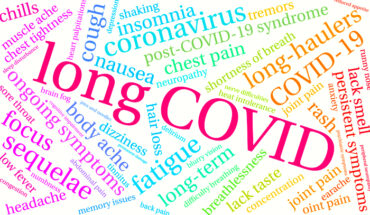Dr Yusef Azad spoke compellingly at the Hippocratic Post debate, the end of HIV?, on the issues of stigma and discrimination faced by people living with HIV.
‘In the end, of course, everything ends – that is trivially true. The interesting question for us to debate for the HIV epidemic is whether the end is near, in sight, probable any time soon. And I have my doubts.
I want to raise three points which I think mean the end of HIV is not imminent, and though it may, over a longer timeframe eventually arrive, there is nothing inevitable about it – it will require the same determination, and doggedness, and clinician and community activism, and victories along the way, and some defeats, that has got us to where we are today.
Stigma and discrimination
The first challenge I’d like to point to is stigma and discrimination. We all know that stigma has been affecting people with HIV since the very start of the epidemic. HIV has two lives as it were – it has a physical existence, it is a virus, which was once deadly but with current treatments is now something which can be lived with successfully. But that is just part of the picture. HIV also has a symbolic life – it lives at the nexus of a host of fears around infection, death, gender, sexuality, foreign-ness, morality. And what’s striking is that HIV stigma has been very resistant to all this good news of biomedical advance.
HIV also has a symbolic life – it lives at the nexus of a host of fears around infection, death, gender, sexuality, foreign-ness, morality. And what’s striking is that HIV stigma has been very resistant to all this good news of biomedical advance.
And the stigma is both pervasive in society and experienced, internalised, by people living with HIV. If you haven’t ended HIV stigma you haven’t ended HIV.
Of course stigma is not what it was in the 80s, it changes, it evolves, but it is still a reality for people with HIV in the UK. The 2015/16 UK Stigma Index found that half of people with HIV felt shame, guilt or self-blame in relation to their HIV status and a fifth reported feeling suicidal – 35 years on from the beginning of the epidemic. Experiences of stigma and discrimination in healthcare are common, as is sexual rejection from possible partners. NAT’s survey of public attitudes to HIV, which we last did with Ipsos MORI, a representative sample, in 2014 found that stigmatising views around HIV transmission were actually getting worse – 16% of the public in 2014 thought you could pass HIV on from kissing compared with 9% in 2010.
In the last month NAT along with THT, BHIVA and BASHH have had to fight tooth and nail, successfully, I might add, to remove clauses from a Bill going through Parliament which would have allowed for compulsory HIV testing of people suspected of assaulting an emergency worker, spitting and scratching for example – despite the absence of any risk of transmission in these circumstances. If that had become law we would have gone back 30 years in terms of stigmatising attitudes to HIV. We won – the clauses were removed – but it was a close run thing – and brought home how far we have to go to weed out these fears and attitudes from society.
There is evidence of what works in addressing stigma, it requires sustained and consistent investment of resources and political will, but there is little action either here in the UK or elsewhere in the world comprehensively to address the problem. Maybe there are just too few people with HIV for the Government to bother – they are after all doing more on mental health stigma, but poor mental health affects millions of people.
You won’t end HIV unless you end HIV stigma – one reason is that HIV stigma sabotages all our best laid plans for an effective HIV response. NICE have been recommending routine HIV testing in hospitals and in GP practices in high prevalence areas since 2010 – that is the way to reach heterosexual men and women with HIV. But still it is hardly ever done. And the reason is not in fact the unwillingness of people to test – it is the stigma around an HIV test amongst NHS doctors, that is stopping us making progress. This will mean some people with HIV, especially heterosexual men and women, will be left behind and not experience the successes already noted elsewhere in addressing the epidemic.
You won’t end HIV unless you end HIV stigma because of the tens of thousands of people living with HIV in the UK, and the millions around the world, who cannot forget about their HIV, however good the treatment, because of the stigma they experience often on a daily basis. They will tell you that if you haven’t ended HIV stigma and its burden in their lives, then you haven’t ended HIV.
Lack of political will and funding
We don’t only need the tools – we need the money and the political will to pay for and use these tools.
Are they guaranteed? Are they even likely to be available so we can ‘finish the job’ and end HIV? I would say sadly that the likely answer is ‘no’, or not any time soon. And that is because of the 80% rule – a rule which I have made up for the purposes of winning this debate, but which is no less true for that. The 80% rule states that once you get 80% of the way towards resolving a crisis then inexorably political attention and funding begin to move elsewhere, to address the next crisis, the next big thing.
The 80% rule states that once you get 80% of the way towards resolving a crisis then inexorably political attention and funding begin to move elsewhere, to address the next crisis, the next big thing.
Once the problem is thought to be manageable, once the worst of the crisis is over, once the considerable expense of the final push no longer seems justified by the small amount left to do, once fashions move on – you have lost the momentum to entirely finish the problem off.
And unfortunately we are already seeing the signs of this cooling off on HIV both globally and in the UK. UNAIDS report that for 2016 global resources to tackle HIV were $7.2 bn short of what was needed that year for us to be on track to eliminate HIV by 2030. In that same year the Kaiser Foundation reports that donor government funding to support HIV efforts in low- and middle-income countries decreased by half a billion dollars from the previous year. Michel Sidibe commented that ‘Declining international resources will hamper our ability to reach the 17 million people who still need treatment’. International resources have remained flat since 2013, according to UNIADS, and whilst for some time increases in domestic resources compensated for that, the increase in those contributions also appeared to slow in 2015/16. Only today in the current issue of the Lancet a detailed paper on development funding and HIV resources between 1995 and 2015 found that funding peaked in 2013, has been declining ever since and this is prejudicing future success in combatting HIV.
This is not only apparent at a global level – at NAT we have tried get a take on investment in HIV in the UK. Now of course HIV treatment of very high quality is available to all and that is something we must all be very grateful for. There is really no scope not to spend there. But where funding is more discretionary we have seen massive cuts. Let’s take support services for people living with HIV – essential since the beginning of the epidemic in supporting people with HIV come to terms with their diagnosis, engage with treatment, deal with stigma, get advice on benefits etc etc. In one year from 2015/16 to 2016/17 there was across the country a cut in total expenditure on these vital services of 28%. Local councils and government think there’s no more need, people with HIV are living well and long, and in a time of austerity there are more important things to spend their money on – we had quoted back to us by a Minister when we raised our concerns – but the UK has already reached the 90-90-90 target of 90% of people diagnosed being virally suppressed. Job done. A lesson in the downside to targets, surely.
And the story is similar on spend for HIV prevention and testing – we found that over two years spending on HIV prevention and testing outside the sexual health clinic dropped in high prevalence local authorities in England, where the need is greatest, by 29%.
Let’s not forget that we very nearly didn’t get PrEP and are still waiting for a national PrEP programme. NHS England wanted simply to walk away from the cost and it took a legal challenge from NAT and coordinated activism from across the HIV sector and affected communities to get them to change their mind – I suspect we’ll need that activism again very soon to insist on national provision to all who need PrEP. The moral I think is not that progress is impossible, but that it is far from inevitable and that increasingly every step of progress will be hard fought for.
It’s worth bearing in mind also that the final push in ending an epidemic can be the most expensive part in terms both of money and political capital – we have seen amazing drops in MSM HIV diagnoses in the major London sexual health clinics but this is success in a population already very HIV aware and accessible to sexual health services – what about the heterosexual men and women, the people in black African communities, still diagnosed exceptionally late? How will we see a similar falls in these communities? It requires gearing up the wider system to test for HIV, community activism and health promotion, anti-stigma work – I am going to fight for this to happen. But let’s not pretend it’s going to be easy in today’s political and economic climate, or just fall into our lap.
The millions who will continue living with HIV
Talk of ending HIV is now very much linked to the UN’s Sustainable Development Goal of ending HIV as a public health threat by 2030. But ending HIV cannot only be about stopping new transmissions occurring – that forgets entirely and marginalises the 37 million people living with HIV worldwide and the over 100,000 living with HIV in the UK. Even with all the optimism about prevention advances, we are still going to see people getting HIV for many years to come, many of them very young, with decades of life ahead of them (there were 160,000 children diagnosed with HIV worldwide in 2016 alone).
Even with all the optimism about prevention advances, we are still going to see people getting HIV for many years to come, many of them very young, with decades of life ahead of them (there were 160,000 children diagnosed with HIV worldwide in 2016 alone).
There is a real risk that this sort of health sector machismo talk of ending HIV by 2030 will mean neglect for decades, for lifetimes, of people actually living with this condition.
But of course that all changes if we come up with a cure for HIV, a treatment which not only controls the virus but permanently eradicates it from the body. This has been an area of increasing interest and research. So how far away is a cure? The answer is – we have a very long way to go – to quote one of the leading cure researchers on the subject at this year’s national HIV clinicians’ conference. Indeed many think that an absolute cure may be too difficult to achieve given the way HIV continues to exists in latent pockets in the body, even when virally suppressed. What is more likely certainly in the medium term is a functional cure which does not entirely remove the latent virus from the body but means even without daily treatment the virus does not replicate and endanger health. Even that functional cure though utterly marvellous is itself a long way off and for the person living with HIV it does not totally end HIV, it would just finally control it. The person would still be HIV positive and conscious of it. In a recent paper published in AIDS Research and Human Retroviruses the authors Laurie et al reported on focus groups amongst people living with HIV on their views of a cure. One striking finding was that, and I quote, ‘Many participants did not regard a functional cure as an improvement over controlling HIV through ART’.
And in any event putting aside how long it will take to discover a cure, develop and market it, putting aside how long it would take for the cure to be affordable and cost-effective, and then rolled out across all the various health systems in the world – would everyone living with HIV want a cure? Maybe most would, maybe the vast majority. But I was speaking recently to Paul Clift a colleague in the HIV sector who told me that he’d been informally asking people living with HIV whether they would take a cure and yes, some said yes, and some said they weren’t sure, and some said no. For that latter group their identity had grown and blossomed through the process of coming to terms with their HIV positive diagnosis, living with it, and supporting others also. It is part of who they are. They resist the view that for them personally HIV has been an unmitigated negative experience. Which brings me to my last point ..
Do we want HIV to end?
Well of course we do – I don’t want any more transmissions and I don’t want any more people having to live their lives complicated by this condition. But there is another sense a larger and perhaps a metaphorical sense in which I don’t want it to end. There is something special about HIV and the history of the global response. HIV is as I have said as much a social as a biological phenomenon – and I have spoken about the dark side of that social existence in stigma but there is a much more positive and inspiring element as well. Faced with the calamity of the AIDS crisis, faced with the onslaught of fear and prejudice, people living with HIV, their lovers, their carers, their communities, their doctors and nurses and healthcare workers, didn’t simply sit back and cower. HIV is where people faced down prejudice, took to the streets, and forced change from government, pharmaceutical industry and hospitals. They insisted on a wholly different relationship between doctor and patient which is now the orthodoxy across healthcare, a relationship of genuine partnership. There was a wholly new approach to treatment information for patients and patient experts emerged. There were new solidarities created between lesbians and gay men and sex workers and black African women. There was for the first time an insistence of community involvement in all planning and decisions. There was an international community created across boundaries of those affected by HIV. I could go on – you know it – the inspiring story.
This is also part of what HIV is – and though we might want the virus to end I don’t want this to end. This new and different way of doing things. Whenever we see patients of whatever condition educating each other – that’s HIV. Whenever we see government or industry genuinely listening first to patients – that’s HIV. Whenever we see people insisting on their health rights despite stigma and hostility that’s HIV. And I don’t think that’s ending – I think this new and better way of doing things is just getting going…
- HIV stigma – the end is nowhere in sight - 13th May 2018







This is a very interesting article but it is filled with fuzzy thinking and mis-statements. Actually shocking to read it coming from someone in leadership–or perhaps not so surprising given UK’s slow antiquated response to the HIV epidemic. Remember UK was one of the last Northern countries to adopt the successful strategy of diagnosing people early and offering treatment–they held the line at <350 CD4 cell counts until the WHO recommended it in 2015–by that time 23 other countries were offering HIV treatment earlier! Testing in the UK has traditionally been done in sexually transmitted disease clinics (not the easiest… Read more »